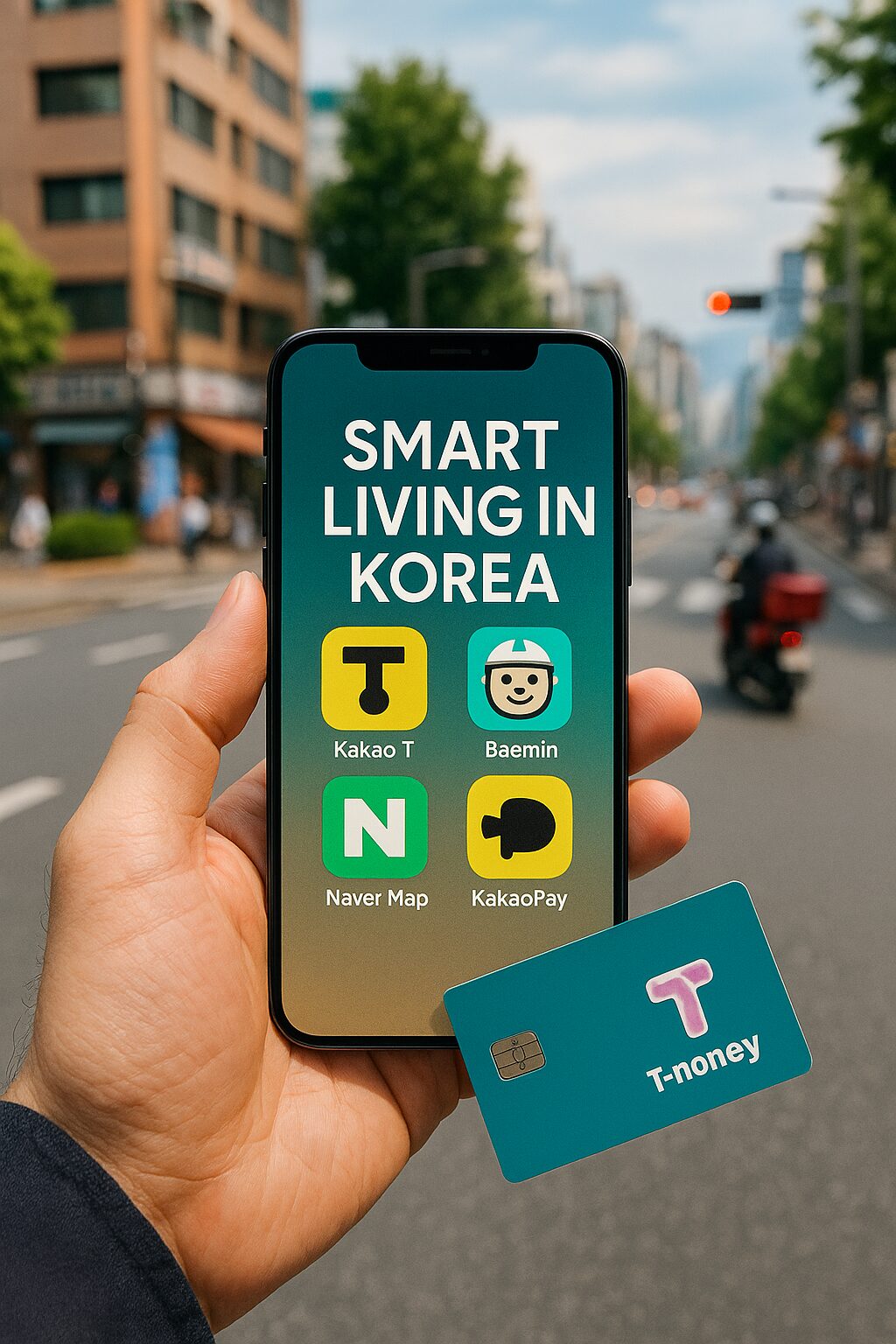Subtitle: The Ultimate Survival Toolkit for Budget-Friendly Life in Korea (or Anywhere)
Introduction: Surviving Abroad Requires More Than Just a Passport
Living abroad isn’t just about booking a flight and finding accommodation.
Especially in Korea, where technology is everywhere and systems work differently, digital nomads and expats need smart strategies and local knowledge to thrive — not just survive.
From banking and public transport to food delivery and translation, this guide will show you exactly which mobile tools and cultural hacks are used by smart travelers and remote workers to live more efficiently in Korea.
Whether you’re staying for a few weeks or a few years, these tips can save you time, money, and stress.
1. Navigation: Naver Map & KakaoMap (Not Google!)
Why it matters:
Google Maps doesn’t work well in Korea. It lacks turn-by-turn directions and real-time transport info.
Instead, use Naver Map or KakaoMap, which are locally optimized.
What to know:
- Both support English interface
- Real-time bus/train/subway updates
- Shows landmarks, exits, and food spots
- KakaoMap is slightly more tourist-friendly
Pro Hack:
Use “Find Exit” for subway navigation — it tells you which subway car to ride for the fastest transfer.
2. Payments: KakaoPay & NaverPay
Why it matters:
Korea is almost cashless. Even small street vendors often accept QR codes.
KakaoPay and NaverPay are essential for payments, refunds, and rewards.
What to know:
- Link with Korean bank account or foreign-issued credit card (limited)
- Used for online shopping, in-store, and even taxis
- Secure with biometric login
- NaverPay often gives instant cashback
Pro Hack:
Use your T-money card with your Kakao or Naver account to auto-reload and track subway/bus spending.
3. Food Delivery: Baemin & Yogiyo
Why it matters:
Korean delivery is legendary. You can order anything from fried chicken to contact lenses.
What to know:
- Baemin (배달의민족) is the #1 food app
- Yogiyo is a strong alternative
- English UI is limited, but Google Lens helps
- Can pay via KakaoPay or credit card
Pro Hack:
If you don’t have a Korean number, use apps like Shuttle or Coupang Eats Global (English-friendly).
4. Language Support: Papago & Naver Dictionary
Why it matters:
Even if Koreans are helpful, many don’t speak English fluently.
To get around this, use Papago — Korea’s best AI translator — and Naver Dictionary for more depth.
What to know:
- Papago handles slang, menus, signs better than Google Translate
- Supports voice, camera, handwriting input
- Naver Dictionary helps with grammar, pronunciation
Pro Hack:
Use the “Honorific Detection” feature in Papago for respectful phrasing in text or speech.
5. Shopping: Coupang & Gmarket
Why it matters:
Amazon doesn’t work well in Korea. Coupang is the go-to for same-day or next-day delivery.
What to know:
- Coupang = Korean Amazon, with Prime-style service (Rocket Delivery)
- Gmarket offers more global brand options
- Foreign cards may work, but Korean account preferred
- Apps often have auto-translate to English
Pro Hack:
Use Naver Shopping to compare prices between Coupang, Gmarket, and other vendors in one search.
6. Housing & Rentals: Zigbang & Dabang
Why it matters:
Short-term stays can be expensive. These apps let you find apartments without brokers.
What to know:
- Zigbang and Dabang have both monthly and long-term options
- Include actual photos, price breakdowns, and location info
- Foreigners can sometimes book directly
- Some units don’t require key money (jeonse)
Pro Hack:
Use the “Wolse” filter for monthly rentals and avoid deposit-heavy places.
7. Transportation: Kakao T (Taxi, Bike, Subway)
Why it matters:
Kakao T is Korea’s answer to Uber — plus more.
What to know:
- Book taxis, bikes, and even EV charging stations
- Tells you when buses/subways are crowded
- Payments can be linked to KakaoPay
- Supports real-time traffic info
Pro Hack:
Schedule a taxi in advance during rainy or rush hours — they disappear fast!
8. Essential Lifestyle Tools:
| Need | App |
|---|---|
| Banking | Toss, K-Bank, Hana OneQ |
| Health & Hospitals | Goodoc, Seoul Hospital Finder |
| Events & Tickets | Interpark, Yes24 |
| Used Goods | Karrot (당근마켓) |
| Community & Info | Meetup, Reddit Korea, Facebook Groups |
Pro Hack:
Use Karrot to buy used furniture or electronics at half price when you arrive — and resell them before you leave.
Bonus: Survival Hacks from Real Expats
- Join a SIM plan with an eSIM provider — saves time at airport
- Use NAVER ID for all logins — most websites accept it
- KakaoTalk is essential — for messaging, community chats, and more
- Ask locals for “편의점 추천템” — convenience store snacks and drinks worth trying
- Use Coupang’s “Global” tab — international delivery even from Korea
💊 Top 5 Korean Supplements That Foreigners Actually Buy (And Reorder)
🛡️ Korean Insurance Hacks That Actually Save You Money
Final Words: Korea Is Smart — You Should Be, Too
South Korea is one of the most tech-advanced and systematized societies in the world.
But that also means you need to play by its rules.
With the right apps and tips, you can enjoy a smooth, affordable, and exciting experience — without frustration or waste.
Being smart isn’t optional here. It’s how you survive.
